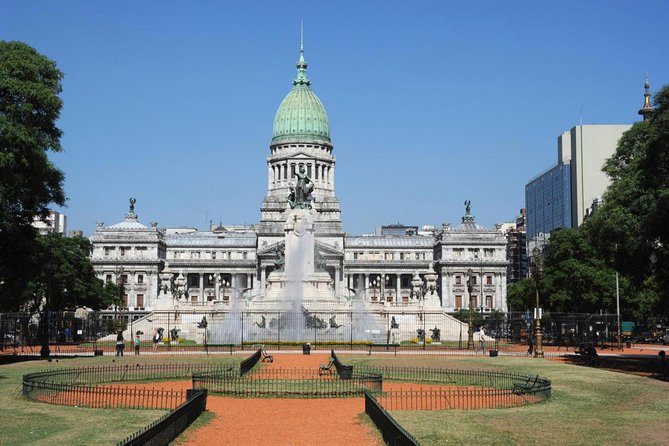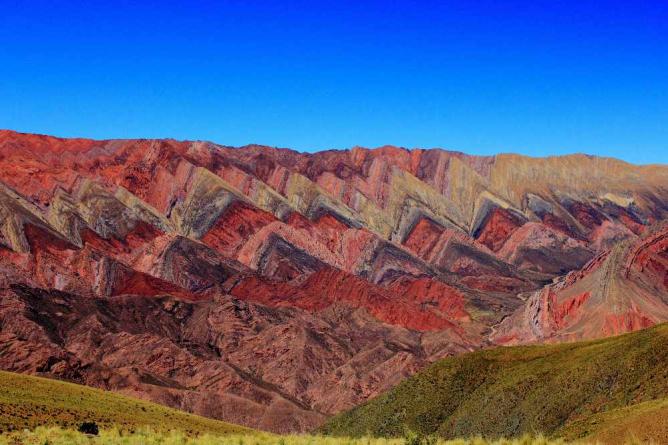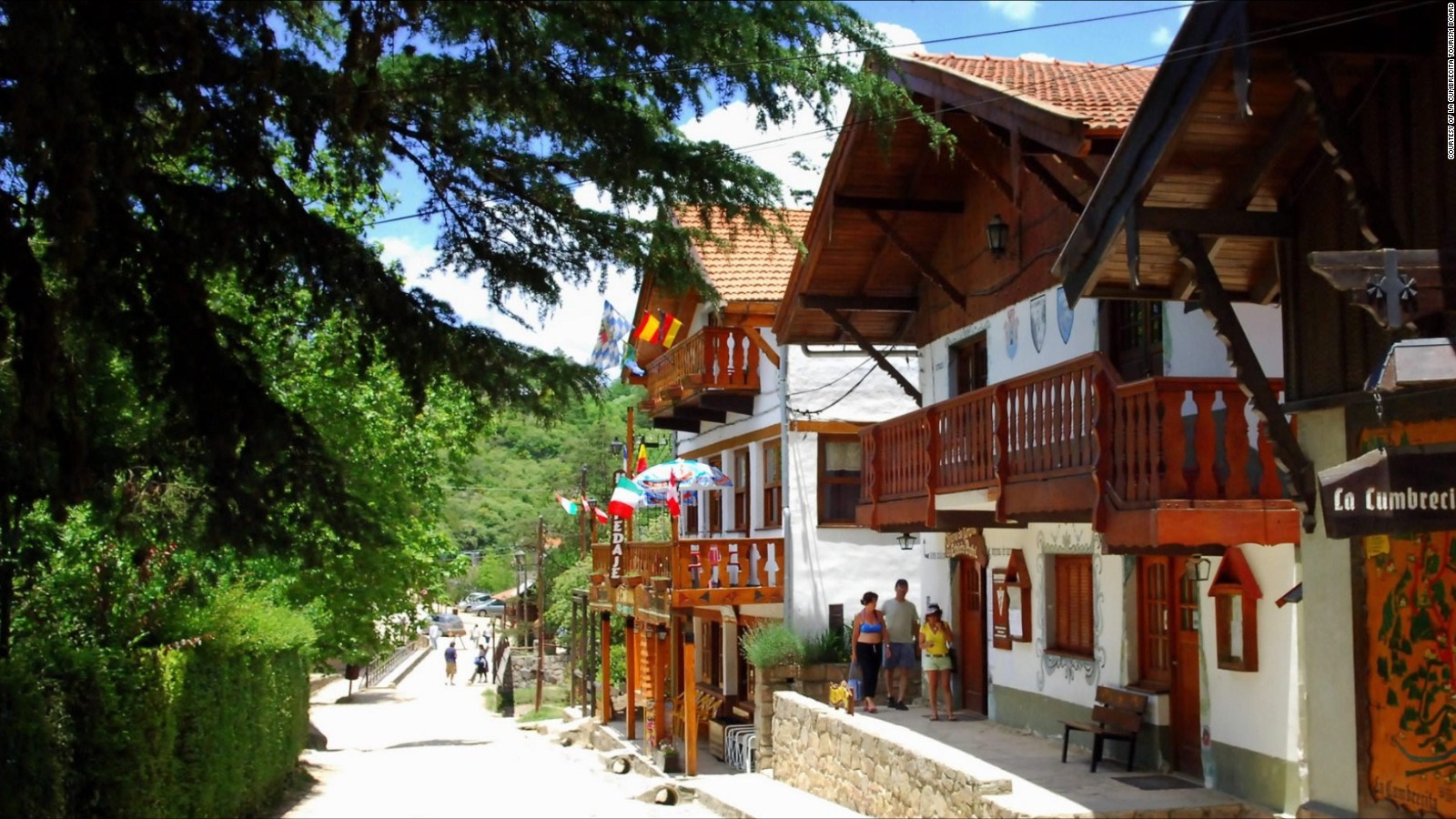RIO DE JANEIRO, BRAZIL – Economic activity in Argentina collapsed during the ill-fated year of 2020. Official data show a 10% contraction, the most severe on the continent along with Peru’s if the Venezuelan catastrophe is excluded. In 2002, when Argentina collapsed, the drop was only slightly higher: 10.9%. Inflation is very high (38.5% in the last twelve months and rising), the currency keeps depreciating, Central Bank reserves do not reach US$3 billion and 4 out of 10 Argentines live in poverty. The macroeconomic picture is very alarming.

Argentina, however, is used to bankruptcy and recovery. And relative decline. Since 1921, exactly a century ago, when it was one of the world’s wealthiest countries (its Gross Domestic Product -GDP- per capita was then equivalent to that of France or Germany), it has experienced an average annual inflation rate of 105% and has been forced to change currency five times: peso national currency until 1969, peso ley until 1983, Argentine peso until 1985, austral until 1991 and the current peso. Since 1980 it has suspended payments of its foreign debt five times (no other country in the world matches this record of defaults) and is currently the International Monetary Fund’s main debtor, with US$44 billion to be repaid.
In December 2019, when President Alberto Fernández took office, things were bad. Argentina had relapsed into default and had been in recession for three years. Then, within weeks, the pandemic hit. Economy Minister Martín Guzmán had to fight on two fronts. On the one hand, he renegotiated the debt with private creditors over lengthy online meetings and secured a payment deferral and a significant reduction in interest rates. This brought some breathing room. Now he is trying to persuade the IMF to agree to a delay in the repayment of its loan.
The other front seemed even more complex: how to subsidize companies and citizens affected by the coronavirus shutdown? Without access to credit markets, Martin Guzmán had to resort to pure money printing. During 2020, the Central Bank issued over 1.2 trillion pesos (printing presses were contracted in Brazil and Spain because the two Argentine mints were already working 24 hours a day), with the risk that inflation would worsen. As seems to be the case. Last January, prices rose by 4%.
Despite everything, the country continues to function. A good example of business as usual in the face of all past and present hardships is provided by Galfione y Cía, a textiles company founded by Hugo Galfione in 1947 under the presidency of Juan Domingo Perón. Hugo’s grandson, Luciano Galfione, is the current director. The Galfione family has overcome almost unthinkable circumstances, such as hyperinflation or the post-2001 barter phase. Luciano Galfione pays 150 monthly payrolls, runs three plants at full capacity and survives thanks to the domestic market.
The domestic market is one of the keys to Argentina’s difficulty in maintaining sustained growth, and partly explains the huge inflationary pressure: its economy is poorly linked to international trade. A comparison with Chile, a country with 19 million inhabitants against 44 million in Argentina, is enough to reflect the phenomenon. Chile exports close to US$70 billion and imports around US$59 billion; Argentina exports just over US$60 billion, basically grains and meat, and imports a similar amount.

Entrepreneur Galfione allows himself to joke: “Look how rich the country which withstands the Argentines will be.” In 1984, when Argentina was emerging from its darkest dictatorship, Nobel Prize winner Paul Samuelson (1915-2009) expressed a similar idea unjokingly: “Argentina is the classic example of an economy whose relative stagnation does not seem to be the result of climate, racial divisions, Malthusian poverty or technological backwardness. It is its society, not its economy, that seems to be sick.”
The government of Alberto Fernández blames the previous government of liberal Mauricio Macri (2015-2019) for the current crisis. Admittedly, during 2018 the peso lost 40% of its value and the huge loan received from the IMF evaporated in desperate hedges of the fiscal deficit and in speculative operations (a large part of the US$44 billion received ended up abroad or in safety deposit boxes); when in the primaries of August 2019 it became clear that Peronism was going to return to power, the stock markets collapsed, the peso depreciated another 38% and exchange controls, the so-called “cepo”, had to be reestablished to prevent a collapse. But Macri had in turn inherited serious problems from his predecessor as President, Cristina Fernández de Kirchner, who is now Argentina’s vice-president.
“It is a sum of crises,” says Diego Sánchez-Ancochea, professor of Political Economy for Development at Oxford University. “Argentina never manages to emerge from its crises: it increased its debt in the 80s, in the 90s it tried to solve the problem through privatizations, then came the 2001 and 2002 crisis through the exchange rate. Calm periods are created, but the structural problems are never solved. Crises come back because they never went away.”
An endemic crisis is the peso. Decades of high inflation and currency erosion, coupled with the trauma of the 2001-2002 “corralito” (Argentines could not access their bank deposits for almost a year, and when they were able to do so they found that their dollar savings had been converted into devalued pesos), have made Argentina a dual currency country. Real estate market prices, for instance, are set in dollars.
“The dollar is not just another variable, but a gauge that reflects how the economy and politics are doing, as well as a savings instrument,” says Marina Luzzi, co-author along with Ariel Wilkis of the book El dólar, historia de una moneda argentina (The dollar, history of an Argentine currency). Argentina never manages to produce as many dollars as it needs, which is why, according to Luzzi, exchange controls (individuals are not allowed to buy more than 200 dollars per month) are a requirement. The disappearance of tourism has aggravated the lack of greenbacks. The problem is so severe that the imports of high-end cars and expensive distillates have been banned.
Argentina is unable to overcome its historical inconsistency between the needs of its agriculture, the great dollar generator, highly competitive in the international market and therefore a supporter of free trade, and its industry, which at least since Perón’s first term (1946-1955) has operated under a protectionist and almost autarkic logic summarized in a statement that Peronists keep repeating: “To live with what is ours.”

The “raw materials curse”
Douglas Southgate, a professor at Ohio State University specializing in Latin American studies, explains it as follows: “Argentina suffers from a unique form of commodity curse originating in the agricultural sector. Its agriculture, which enjoys a strong comparative advantage, employs few workers and the best rural land is concentrated in relatively few hands. As a result, the sector is a favorite target for taxes designed by politicians whose constituents are employed in other economic sectors. The taxation of Argentine agriculture results in a chronic underperformance of the national economy, including recurrent and severe crises.”
In reality, directly or indirectly, the Argentine countryside employs over 2 million people, 14% of the working population, and barely contributes 10% to the Gross Domestic Product. Its real strength, and the origin of its conflicts with Peronism over taxes and deductions at source, lies in its competitiveness: out of every US$10 that enter the country from exports, US$7 correspond to agriculture. Without the agro-export industry, hardly any foreign currency would enter the country.
Galfione has his own opinion on the matter. “My grandfather Hugo, the company’s founder, had fields in Santa Fe, in Recreo, the most expensive area with the highest yields, Argentina’s soybean pole. In 1947, he said that the future was industry, he sold all his fields in Santa Fe and came to Buenos Aires to start a hosiery factory. If I saw my grandfather today I would shoot him five times. But seriously speaking, he was not misguided, because there is no developed country that is not an industrial power.”
The problem is that Argentina has never been an industrial power. It bet heavily on the import substitution policy and since mid-twentieth century it started to produce all kinds of goods in order to avoid buying them from abroad. This was the formula that the United Nations Economic Commission for Latin America and the Caribbean (ECLAC) recommended to the continent as a whole in order to develop the economy and balance the trade and current account balances. Argentine industry was encouraged and protected until the 1976 dictatorship interrupted this policy. “Industrial logic dies with the military,” says Luciano Galfione.
In 1976, when the world was suffering the oil shock crisis, Argentina’s GDP reached US$51 billion. South Korea’s was US$30 billion. Today, Argentina’s economy “weighs” just over US$80 billion. The South Korean economy (which half a century ago boosted its industrialization thanks to almost slave-like labor conditions and the manipulation of exchange rates) is worth US$1.4 trillion and is an export phenomenon.
What happened to Argentina? That is also explained by entrepreneur Galfione, who in 2016 tried to launch a nanotechnology project to manufacture thread with a special crystalline structure, capable of repelling heat, insects or bacteria. He needed public grants and the Macri administration did not provide them. “I don’t have any machine that is not equal to or better than those they have anywhere else in the world, and I have world-class productivity. But I am killed by costs. China or India sell below the cost of raw materials. I am cheaper than Italy or Spain, but they manufacture in the East.”

There are other issues related to the price of energy and transport: “The cost of logistics is tremendous. It is cheaper to send a container to China than to bring a truck from Catamarca.” The result is a thick industrial fabric but, as a whole, incapable of measuring up to the industry of other countries. Without external competition because it hardly imports (tariffs are high), its products lean toward mediocrity. The high technological capacity in very specific sectors (genetic manipulation, nuclear energy, pharmaceuticals) is not enough to raise the average level and, in addition, the flight of talent abroad is constant.
“There is something crucial, the lack of consistency in macroeconomic policies,” says Néstor Castañeda, professor at University College London and member of the Institute of the Americas. “The productive structure is highly unbalanced and needs external sources of financing. Everything depends on foreign currency coming in from abroad. Every time global trade contracts or there is a decline in foreign investment inflows, there is a reserve problem. There is no way to solve it. On the one hand, Argentina defaults on payments and this limits its access to capital markets; on the other hand, there is a lack of coordination between exchange rate, fiscal and monetary policies. You grow for 10 years and then you crash and go back to the starting point.”
The 1980s are often considered the “lost decade” for the Argentine economy. The dictatorship ended and with Raúl Alfonsín came democracy, but also hyperinflation. In 1989, prices skyrocketed by over 3,000%. In the textile mill, Luciano Galfione’s father did not keep the balance sheets in pesos, but in kilos, because it was impossible to determine the product’s value. But, considering the macroeconomic evolution and despite the easy money of the 90s, when, under President Carlos Menem, one peso was equivalent to one dollar, and despite the golden years of Néstor Kirchner (2003-2007), in which thanks to the brutal reorganization forced by the 2001-2002 collapse and the rise in soybean prices, Argentina managed to grow significantly with little inflation, Argentina has lost many decades.
Economist Martín Rapetti estimates that, in real terms, the gross domestic product per capita in Argentina today is almost the same as it was in 1974, with the aggravating factor that inequality between rich and poor is much greater. Almost half a century lost. Ripetti, interviewed by the newspaper Clarín, offers a gloomy outlook: assuming that the Argentine economy grows by 6% in 2021 and then continues to grow at an uninterrupted rate of 4.5% per year, which is quite unlikely, the 2011 living standards will not be restored before 2027.
Source: El Pais

